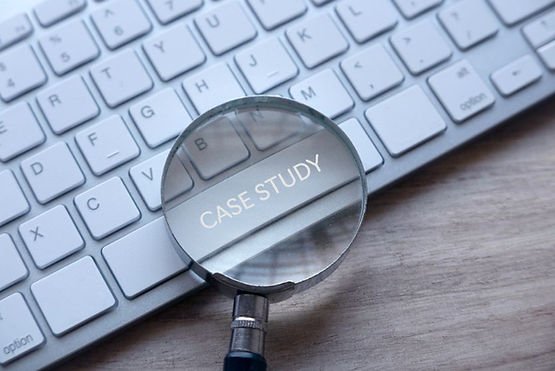How Physical Store Incidents Affect E-commerce Sales
Physical store incidents, such as fights leading to shootings, can significantly impact e-commerce sales. Typically, these events can induce fear or unease among customers, causing them to avoid physical stores and shift towards online shopping. This shift can lead to a surge in e-commerce sales, as customers prioritize safety and convenience. However, the magnitude of the impact can vary depending on factors like the severity of the incident, the retailer’s response, and the pre-existing customer base of the e-commerce platform. As such, it’s crucial for retailers to have strategies in place to manage such incidents and harness the potential increase in online sales effectively.
“Don’t be afraid to get creative and experiment with your marketing.” – Mike Volpe.
We’ll explore everything from the dynamics between physical stores and e-commerce, the nature of these incidents, their direct impact on sales, customer response, and strategic responses, to future trends and best practices.
1. The Relationship Between Physical Stores and E-commerce Platforms
2. Common Types of Physical Store Incidents
3. Case Studies: Physical Store Incidents Impacting E-commerce Sales
4. Understanding Consumer Behavior in Response to Physical Store Incidents
5. Quantifying the Impact of Physical Store Incidents on E-commerce Sales
6. Strategies for Mitigating the Impact of Physical Store Incidents
7. Adapting E-commerce Strategies During and After Store Incidents
8. Future Predictions: The Role of E-commerce in a World of Increasing Store Incidents
9. Conclusion: Lessons Learned and Best Practices for Navigating Physical Store Incidents
1. The Relationship Between Physical Stores and E-commerce Platforms

Imagine this: It’s a bustling Saturday afternoon, and your favorite physical store is teeming with customers. Suddenly, an argument escalates, a fight breaks out, and it leads to a terrifying shooting incident. In the aftermath, local news outlets swarm the area, and the incident becomes a trending topic online. Naturally, you’d think twice about visiting that store again anytime soon. Now, let’s shift gears and step into the world of e-commerce.
E-commerce platforms have been soaring in popularity due to their convenience, wide product range, and the fact that they allow consumers to bypass such potentially distressing in-person experiences. But, intriguingly, events that occur in physical stores, especially those that garner significant attention like the hypothetical shooting we just imagined, can have a ripple effect on their online counterparts. The relationship between physical stores and e-commerce platforms is more intertwined than one might initially think. Here’s why:
Shared Brand Image:
Both the physical store and its online version contribute to a unified brand image. A negative incident at a brick-and-mortar store can tarnish this image, causing customers to rethink their association with the brand, both offline and online.
Omni-Channel Shopping Experience:
In today’s retail landscape, many consumers utilize an omnichannel approach, combining in-store visits with online browsing. A disturbing event at a physical store can disrupt this seamless experience, pushing customers entirely toward e-commerce or even towards competitors.
Media Influence:
In the digital age, news travels fast. A physical store incident can quickly go viral, affecting consumer perceptions nationwide, or even globally. This broad impact can result in a surge or drop in online traffic and sales.
Consumer Trust and Safety Perception:
Trust plays a pivotal role in customer loyalty. A physical store incident can shake this trust, impacting not just the footfall in physical stores but also the click-through rates on the e-commerce platform.
In this interconnected retail ecosystem, it’s clear that events in the physical world can send ripples through the virtual one. And while online shopping offers a buffer from physical store incidents, the impacts are not entirely escapable. As we unravel the dynamics of this relationship further, it becomes evident how crucial it is for retailers to manage and mitigate risks on all fronts – in their aisles and on the digital highway alike.
2. Common Types of Physical Store Incidents

When you picture a typical day at your local supermarket or department store, you’re likely imagining a pretty tranquil scene: customers browsing the aisles, cashiers scanning items, and perhaps some light music playing in the background. But sometimes, this peace is shattered by unforeseen incidents.
While we certainly hope your shopping experiences have been incident-free so far, let’s take a peek at some of the common types of physical store incidents that can turn an ordinary shopping trip into headline news:
Violent Confrontations:
Remember our earlier mention of a fight leading to a shooting? Such incidents, though hopefully rare, do occur. These can stem from disputes among customers, or between customers and staff. The distress caused by these events can dramatically alter perceptions of a retail store, and by extension, its online platform.
Theft and Shoplifting:
These incidents are more common and can often lead to confrontations or altercations. High-profile thefts, especially when they involve violent or dramatic elements, can make potential customers wary of visiting the physical store and may drive them toward the e-commerce platform instead.
Health and Safety Incidents:
From slips and falls to more significant events like fires or structural failures, these incidents can make shoppers question the safety of the physical store. And if there’s a sense of danger, you can bet that customers will prefer the safety of online shopping from their own homes.
Public Health Threats:
In an era marked by pandemics, public health threats like a disease outbreak linked to a store can have serious implications. Customers might avoid the physical store long after the threat has passed, and in some cases, the e-commerce site might see a substantial uptick in activity.
The retail world is not immune to real-world problems, and these incidents can turn the routine into a remarkable, and not in a good way. But as we’ll see in the next sections, these challenges also present unique opportunities for retailers to demonstrate resilience, adaptability, and a commitment to customer safety and satisfaction. After all, every cloud has a silver lining, even when it’s hovering over the clearance aisle.
3. Case Studies: Physical Store Incidents Impacting E-commerce Sales

Nothing brings a point home quite like real-world examples, and we’ve curated a few riveting case studies to demonstrate how physical store incidents can have a direct impact on e-commerce sales. So, grab your detective’s magnifying glass, and let’s delve into the mystery of retail incidents and their effects on online business.
Case Study 1 – The Mega Mart Melee:
A bustling supermarket chain, Mega Mart, witnessed a major brawl break out in one of its outlets. The incident, fueled by a disagreement over the last discounted flat-screen TV, escalated quickly and led to a lockdown of the store. The event made local headlines and went viral on social media. In the aftermath, Mega Mart’s e-commerce site experienced a 25% surge in sales, suggesting a temporary shift in shopping behavior due to the unsettling in-store incident.
Case Study 2 – Boutique Burglary:
An upscale boutique suffered a high-profile theft where a gang of thieves made off with a significant amount of merchandise. The police were involved, security footage aired on news outlets, and the incident became a trending topic. Interestingly, the boutique’s e-commerce site registered a considerable increase in traffic and sales in the weeks following the incident, indicating that customers chose the safety and convenience of online shopping amidst the in-store chaos.
Case Study 3 – The Deli Dilemma:
A popular deli faced a health scare when several customers reported food poisoning. As news spread, foot traffic to the store dwindled, but the deli’s online delivery orders saw a significant uptick. It appeared that customers still craved their gourmet sandwiches, but preferred the perceived safety of consuming food at home.
Case Study 4 – Department Store Disaster:
A catastrophic fire in a renowned department store forced the establishment to shut down for several months for restoration and safety checks. The brand’s robust e-commerce platform became its saving grace, with online sales soaring by over 50% during the physical store closure.
These captivating case studies serve as powerful reminders of the complex dynamics between physical stores and their online counterparts. The domino effect from physical store incidents to e-commerce activity is real, tangible, and as these examples demonstrate, sometimes surprisingly beneficial for online sales. It’s like a retail whodunit, with plot twists at every corner. But worry not, our investigation continues!
4. Understanding Consumer Behavior in Response to Physical Store Incidents

As we’ve seen from our riveting case studies, physical store incidents can leave lasting impressions on consumers, driving them to adjust their shopping behaviors in fascinating ways. It’s like a ballet, where consumers pirouette from one shopping medium to another in response to the music of retail incidents. Let’s strike up the orchestra and examine some key factors that influence these nimble consumer shifts:
Safety First:
When a physical store incident occurs, customers’ primary concern is their safety. Be it a fight that escalates to a shooting, a robbery, or a health and safety incident, shoppers are likely to avoid the physical store in the aftermath, pirouetting toward e-commerce platforms instead. It’s like a choreographed step away from danger and towards the safety of online shopping.
The Spotlight Effect:
When an incident garners media attention or becomes a hot topic on social media, it can heighten the perceived severity of the event. This spotlight can lead to a dramatic dip in physical store footfall and a corresponding grand jeté towards increased online activity.
Brand Perception:
If a brand handles an incident poorly, it could face a loss of customer loyalty and trust, affecting both physical and online sales. However, a well-managed crisis could see customers applauding with their wallets, leading to an encore performance in the form of increased online sales.
The Convenience Curtsey:
With the incident causing customers to rethink their physical store visits, the convenience of online shopping becomes even more appealing. Consumers can continue to access their favorite products without the perceived risks associated with the physical store, performing a graceful curtsey to the convenience of e-commerce.
So, as the curtain falls on our exploration of consumer behavior, we see that physical store incidents can choreograph a fascinating dance of consumer responses, often leading to a grand finale of increased e-commerce activity. And as any seasoned balletomane will tell you, understanding these intricate moves is key to keeping in step with the ever-changing retail dance.
5. Quantifying the Impact of Physical Store Incidents on E-commerce Sales

As we continue our journey through the labyrinth of physical store incidents and their influence on e-commerce sales, it’s time to put on our lab coats and safety goggles because we’re about to dive into the world of numbers and percentages. Don’t worry, we’ve ensured there’s no math exam at the end of this! So, how can we quantify the impact of these incidents on e-commerce sales? Let’s break it down:
Sales Comparison:
One of the most straightforward methods is to compare e-commerce sales before and after the incident. An unexpected spike in online sales following a physical store incident is often a clear indicator of changing consumer behavior.
Traffic Analytics:
Using web analytics tools, we can examine online traffic patterns. A surge in unique visitors or an increased average time spent on the site can suggest a shift from physical store shopping to online browsing and buying.
Customer Surveys:
For a more direct approach, retailers can conduct surveys to understand customers’ responses to the incident and gauge if it has affected their shopping preferences. It’s like asking the audience for reviews after a dramatic play.
Social Media Sentiments:
Analyzing sentiments on social media platforms can provide valuable insights. Increased positive engagement with the brand’s online content might signify customers’ pivot towards e-commerce after a physical store incident.
And there you have it! By crunching the numbers, we can translate the twists and turns of consumer behavior into a quantifiable impact on e-commerce sales. It’s like turning the unpredictable plot of a thriller novel into precise, easy-to-understand bullet points. So, buckle up, as our exploration of the world of retail incidents and e-commerce continues. We promise it’s going to be a thrilling ride!
6. Strategies for Mitigating the Impact of Physical Store Incidents

Navigating the stormy seas of physical store incidents can be a daunting task for any retailer. But fear not! With the right strategies, it’s possible to steer the ship safely and even catch a fair wind to boost e-commerce sales. Consider these strategies as your trusty compass and weather chart:
Crisis Management and Communication:
Responding promptly and appropriately to an incident is crucial. Transparent communication with customers about what happened and the steps taken to address the issue can help retain trust. It’s like being the reliable captain who calmly informs the crew about the storm and the plan to navigate through it.
E-commerce Promotions:
In the aftermath of a physical store incident, strategically timed online promotions or discounts can help attract customers to the e-commerce platform. It’s like the lure of a treasure map in a pirate story, drawing customers towards the ‘X’ that marks the e-commerce spot.
Boosting Online Presence:
Enhancing the brand’s online presence through increased social media activity, engaging content, and improved SEO can help drive more traffic to the e-commerce platform. It’s like setting up a lighthouse to guide customers through the foggy aftermath of a store incident.
Enhancing Online User Experience:
Ensuring the e-commerce platform is user-friendly and secure, and offers a wide range of products can encourage customers to shift their shopping habits online. It’s like ensuring the ship is not just seaworthy, but also equipped with all the amenities for a comfortable voyage.
By implementing these strategies, retailers can not only mitigate the impact of physical store incidents but also seize the opportunity to enhance their e-commerce performance. It’s about transforming a challenging storm into a favorable wind for the sails of online sales. So, ready the sails, it’s time to catch the wind of opportunity!
7. Adapting E-commerce Strategies During and After Store Incidents

In the world of retail, it’s always showtime, and like any good performer, the ability to adapt is paramount, especially when the stage is set with the unpredictability of physical store incidents. Let’s look at how e-commerce strategies can be choreographed to create a flawless performance during and after such events:
Agile Marketing:
In response to a store incident, adopting agile marketing strategies, like timely email campaigns or social media messaging, can reassure customers and direct their attention to the e-commerce platform. It’s like the stage manager during the spotlight just when it’s needed the most.
Enhanced Customer Support:
Providing robust online customer support during such times can mitigate concerns and queries about the incident, while seamlessly directing customers towards the safety and convenience of online shopping. It’s like the lead actor delivering a compelling monologue that soothes a restless audience.
Virtual Store Experience:
If the physical store is temporarily unavailable, offering virtual tours or augmented reality experiences online can fill the gap, providing an immersive shopping experience right from customers’ homes. It’s akin to a thrilling stage illusion that leaves the audience captivated.
Flexible Delivery Options:
Boosting flexible delivery and return options, like same-day delivery or free returns, can make the e-commerce platform a more appealing choice for customers wary of visiting the physical store. It’s the showstopping finale that leaves the audience eager for more.
Adapting e-commerce strategies during and after store incidents is like directing a riveting theater production. With the right moves, retailers can turn a potential tragedy into a triumphant performance, winning over the audience and setting the stage for a standing ovation in the form of soaring e-commerce sales. The curtain rises on the next act of our retail drama, so stay tuned!
8. Future Predictions: The Role of E-commerce in a World of Increasing Store Incidents

With our time machine set to “Future,” let’s embark on an exciting journey to explore the role of e-commerce in a world where physical store incidents may become more common. Hold on tight, this ride promises to be as thrilling as a roller coaster through a retail landscape!
The Rise of the Digital Phoenix:
As physical stores grapple with the ashes of various incidents, e-commerce could rise like a digital phoenix, becoming an even more dominant player in the retail scene. It’s like the plot twist in a dystopian novel where the underdog emerges as the new hero.
Retail Omnichannel Utopia:
In the future, we could see a more seamless integration of physical and online stores. Physical store incidents might lead to innovative omnichannel strategies where customers can effortlessly switch between shopping mediums. It’s like teleportation in a sci-fi saga, enabling customers to shop in multiple dimensions.
Artificial Intelligence to the Rescue:
AI could play a crucial role in managing the aftermath of store incidents, providing real-time updates to customers, and personalizing their online shopping experience. It’s like having a friendly robot sidekick in a futuristic tale, ready to assist at every turn.
Enhanced Virtual Reality Shopping:
As a response to increasing store incidents, virtual reality could transform the e-commerce experience, offering customers the thrill of in-store shopping from the safety of their homes. It’s like stepping into a virtual wonderland, where shopping becomes an immersive adventure.
As we cruise back to the present, it’s clear that the role of e-commerce could morph and expand in fascinating ways in a world of increasing physical store incidents. It’s like an unfolding retail saga, full of suspense, intrigue, and endless possibilities. So, fasten your seatbelts, we’re in for a thrilling retail ride!
9. Conclusion: Lessons Learned and Best Practices for Navigating Physical Store Incidents

As we roll up our retail roadmap, it’s time to reflect on the lessons we’ve learned and the best practices we’ve discovered for navigating the choppy waters of physical store incidents. Think of these as the key takeaways from an epic adventure novel:
Transparency Triumphs:
One of the standout lessons from our journey is the power of transparency. When incidents occur, an honest approach can help retain customer trust and loyalty. It’s like the moment of truth in a gripping detective story, where clarity triumphs over confusion.
Flexibility is Key:
Adapting and reshaping e-commerce strategies in response to physical store incidents is crucial. It’s like the shapeshifter in a fantasy tale, constantly evolving to meet the challenges of the narrative.
So, whether you’re a retail giant or a small business, these lessons and best practices can guide you through the labyrinth of physical store incidents. It’s like having a trusty compass and a magic map, ready to help you navigate any twist or turn in your retail adventure. And if you ever feel overwhelmed by the complexity of maintaining an e-commerce presence amidst these challenges, remember, there are experts ready to handle it all for you, transforming your online retail into a ‘done-for-you’ journey.

